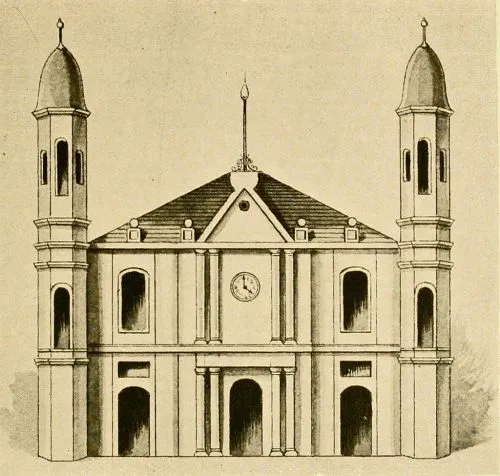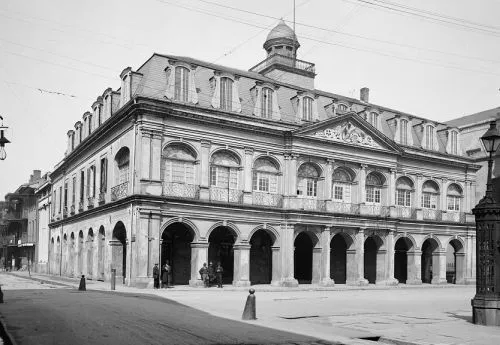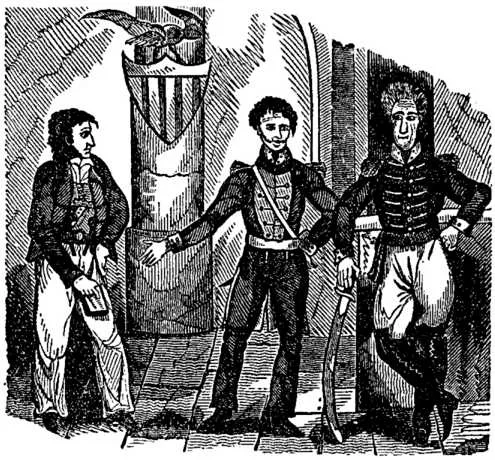
After arriving in New Orleans in late 1815 to defend the city from British Invasion, General Andrew Jackson wrote a letter to his wife hinting that he may not have been taking much pleasure in the task. “Great Babylon is come up before me,” he writes, “Oh, the wickedness, the idolatry.” In 1812, many considered cities in general to be dens of vice and corruption, compared to the virtues of yeoman farming communities, but New Orleans held a special place in their contempt, a town that, in the words of one historian, “offered so much temptation as London.” Unlike the prominent colonial cities like Boston, New York or Philadelphia, New Orleans possessed an entirely un-English character.

New Orleans was a French city originally, which was the origin of its most prominent families, but France, almost entirely uninterested in a colony they were unable to profit from, ceded the territory to Spain in 1763. Many of New Orleans’ most important historical buildings such as St. Louis Cathedral and the Cabildo were completed under Spanish rule and according to that country’s style. Even under Spanish rule though, French remained the most common spoken language, and Francophone creoles dominated political and social life. In 1815, almost no one exemplified the aristocratic pretensions of the city’s elite than Bernard de Marigny, whose enormous fortune and spoiled upbringing led to a life of splendor and generosity that entertained even the future King Louis Phillipe during his exile from France, until eventually he drank, gambled and dueled his way into poverty. The Louisiana Territory was briefly returned to France after the conquest of Spain by Napoleon, before he sold all of it to the United States for $15,000,000.

New Orleans was hardly an equal society, but it would be difficult to find anywhere more racially, ethnically or linguistically diverse in North America. Both American citizens as well as refugees from the French and Haitian Revolutions found a new home in New Orleans during this time, and the city’s population more than doubled between 1805-1812. This wave of immigration included more slaves, as well as free blacks and “mulattoes” (people of European and African ancestry), ignoring an 1807 ban preventing them from entering. Its former ill-repute also gave it a sense of distance from the French metropole, lessening the impact of the rigid social and racial hierarchies instilled in the more profitable Caribbean colonies, leading to the creation of prominent mixed-race and free black populations, more so than anywhere else in the American South. Native American tribes were also relatively common in the area surrounding the city. Members of the Choctaw tribe were on especially friendly terms with the French and Spanish, and they aided them in raids on the more hostile Chickasaw or Natchez peoples. Colonists also possessed Indians as slaves, but the practice never took off for much the same reason Indian enslavement often failed in North America: unlike African slaves, Indians knew the surrounding areas much better and had outside communities more likely to take them in. To reiterate, white creoles (particularly Francophone creoles) still dominated political and social life in the city even as Anglo-Americans began to arrive in greater numbers, but New Orleans still possessed a cosmopolitan nature other American cities sorely lacked.

French rule typically wrote off New Orleans as a disease-ridden backwater, but the Crescent City did possess several major geographic advantages as a trading hub. Sitting at the mouth of the Mississippi River, New Orleans provided the only link between it and the Gulf of Mexico, along with a natural harbor that provided protection from the frequent storms and hurricanes that wracked the coast. Its placement on the Gulf Coast also made it the main recipient of goods from Central and South America, along with the Caribbean, in the United States. The Spanish governors recognized these features, and invested heavily in developing the port, but heavy mercantile restrictions on which ports merchants could access led to a massive black-market infestation. By 1812, New Orleans was home to one of the largest collections of pirates and smugglers in North America, and one such man, Jean Laffite, a prominent and popular smuggler selling stolen goods out of his brother’s blacksmith shop, inadvertently became an American hero during the 1815 battle. Early in the war, Lafitte received an offer of captaincy from the British, and had good reason to accept, as his frequent flaunting of American law began to have steadily worse consequences. Years before the war started, Lafitte began using his smuggling profits to stockpile gunpowder and munitions, rather. When Jackson arrived at the city, desperate for anything to hammer his ragtag militia into an effective fighting force, he struck a deal with Lafitte, promising pardons for him and all his associates should they aid in the defense of the city. Lafitte agreed, and set about transferring much of his stockpiles to Jackson, which he used to great effect when the British finally made their assault. Lafitte, his brothers, and his crew also all participated in the fighting itself, earning special praise from General Jackson himself, and winning his pardon from the United States as promised.
When contemporary Americans took in the sight of this apparently lawless rabble, they shrieked with terror at their foreign customs and wondered if they could ever consider these people proper Americans, only for the people of New Orleans to put those concerns to shame. What made the Battle of New Orleans unique in American history was not just the totality of Jackson’s victory over the British, nor even the fact that it took place after the negotiation of the peace treaty. What set it apart from other battles in the war was the distinctly New Orleans character of the American force. Though much has been made in legend and popular culture of units like the Kentucky Rifleman, Jackson would not have been able to succeed the way he did without volunteers of New Orleans, where thanks to the lax social norms of the city, playboys like Bernard de Marigny served alongside free blacks and mixed-race creoles, though likely in separate units. Nor could he have done so without the artillery supplied by smugglers like Lafitte, who dealt the most casualties in the battle. At a time when Americans still wondered what their country would look like as they expanded west, it must have been quite a shock to see their newest fellow citizens in New Orleans to prove their loyalty and valor so rapidly.
Related Battles
71
2,034





